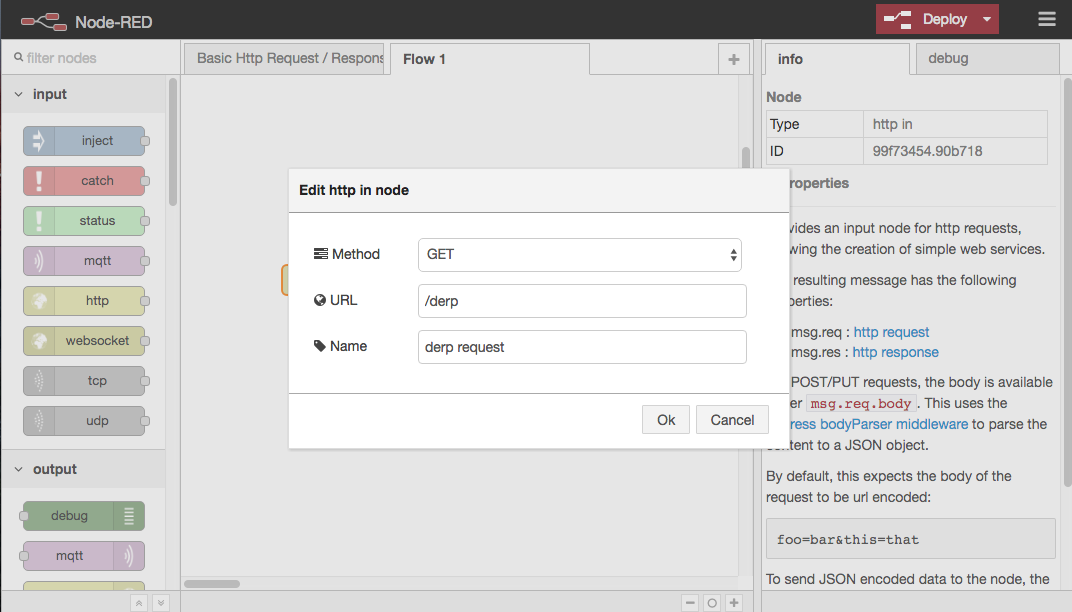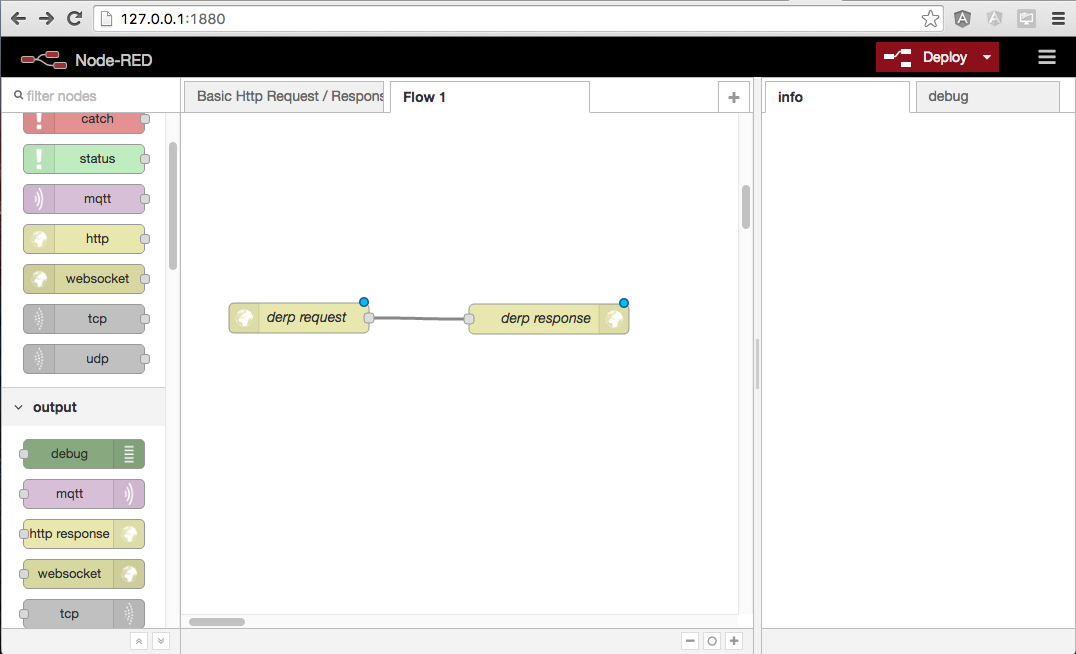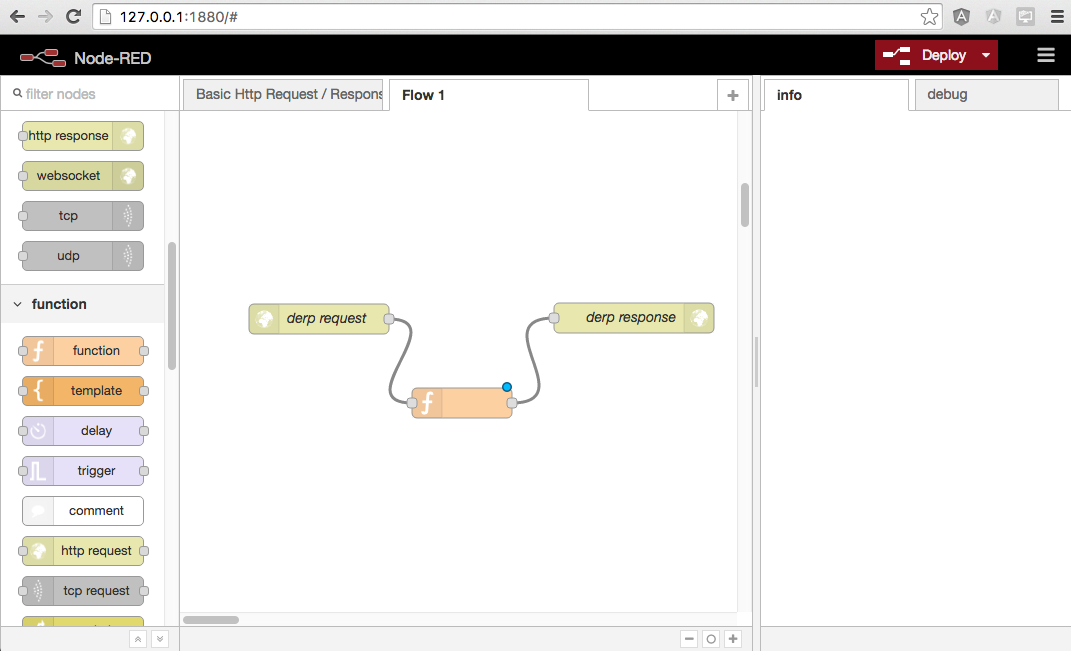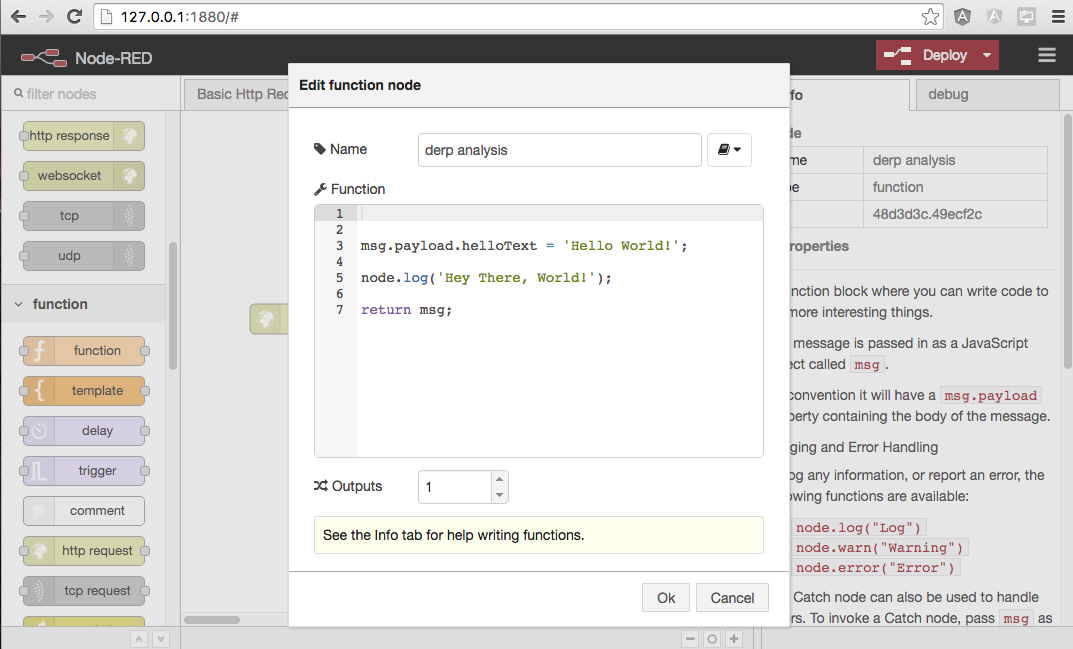Getting Node-Red
sudo npm install -g node-red
node-red
[info] Server now running at http://127.0.0.1:1880/
My First Flow
Logging and Returning Objects
msg.payload.helloText = 'Hello World!'; node.log('Hey There, World!'); return msg;
Sending Request Parameters
http://127.0.0.1:1880/derp?name=Jim&age=25
msg.payload.helloText = 'Hello World!'; var name = msg.payload.name; var age = msg.payload.age; node.log('The user ' + name + ' has age: ' + age); return msg;












 RSS Feed
RSS Feed